MY TOP FIFTEEN STAR TREK MOMENTS FROM THE ORIGINAL SERIES
By Chris M. Barkley.
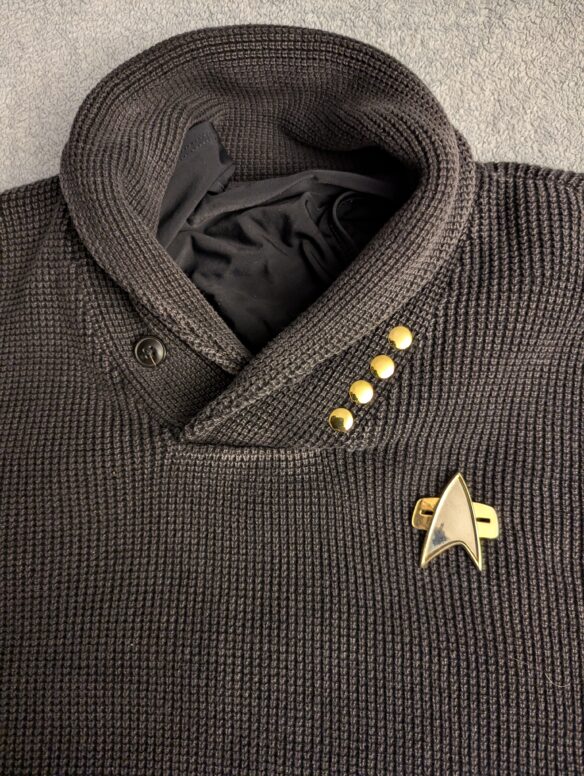
Fifty-eight years ago, on September 6, 1966, an ambitious science fiction television series called Star Trek premiered…in the Dominion of Canada. (It first aired in the United States two days later on the NBC television network and that date has wrongly been identified as Star Trek Day for decades. But, I digress…)
Over the many decades I have been watching Star Trek, I have witnessed its epic and sensational highs of groundbreaking episodes and incredible acting along with the lows of inadequate scripts, poor execution and premature cancellations by callous and indifferent networks.
To mark this anniversary of one of the greatest cultural gifts of the 20th Century, I fondly look back at the best fifteen episodes of the original series that shaped and informed me as a person, from the age of ten through to my days as a young college student.

15) Arena, Season 1,Episode 19, January 19, 1967, Written by Gene L. Coon (based on a 1944 short story of the same name by Fredric Brown, directed by Joseph Pevney:
This episode offers us our very first look at the Gorn, a cunning, hostile and territorial reptilian alien species, which was recently revised and retconned on recent episodes of Star Trek: Strange New Worlds. Kirk’s struggle against the Gorn captain was epic, thrilling and, in the end, uplifting.

14) Space Seed, Season 1, Episode 22, February 16, 1967, Written by Carey wilber and Gene L. Coon, directed by Marc Daniels:
Three words, one name; Khan Noonien Singh. Ricardo Montalbán’s iconic anti-hero was the perfect foil for the crew of the Enterprise and the storyline spawned what many people consider the best of the theatrical films, The Wrath of Kahn. My only complaint is that in hindsight, a trained Starfleet officer like Marla McGivers (Madlyn Rhue) should NEVER have been charmed by a man with such an abusive personality like Khan. Oh well…

13) Mirror, Mirror, Season 2, Episode 4, October 6, 1967, written by Jerome Bixby, directed by Marc Daniels:
Being among the first of many alternate universe stories, it was shocking/delightful to my eleven year old mind to see the evil sides of Spock and Sulu and have Kirk, Uhura, McCoy and Scotty pretend to be bad guys.
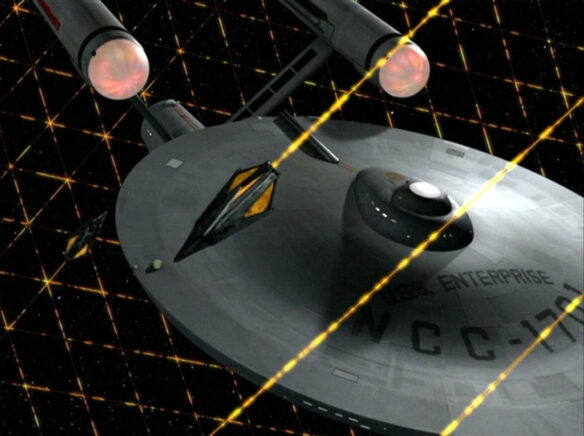
12) The Tholian Web, Season 3, Episode 9, November 16, 1968, written by Judy Burns and Chet Richards, directed by Herb Wallerstein:
In this taut thriller, in which Kirk is trapped on a derelict starship phasing in and out of reality, was a refreshing look at the emotional dynamic between Spock and McCoy, as both wrestle with the health of the crew, weighing whether or not it is worth risking the ship to rescue Kirk AND evade the Tholians attempts to capture and/or destroy the Enterprise. Yikes!

11) Devil in the Dark, Season 1, Episode 25, March 9, 1967, written by Gene L. Coon, directed by Joseph Pevney:
This was an early moral lesson about violence and empathy for me; appearances are not always what they seem to be as Kirk, Spock and McCoy investigate the mysterious deaths at a mining facility. Spock’s mind meld encounter with the Horta is moving and the denouement is one of the best of the series.

10) The Naked Time, Season 1, Episode 4, written by John D.F. Black, directed by Marc Daniels:
When I was young, nothing scared me more than adults acting in an irrational manner. Which is exactly what happens when an Enterprise away team brings back a madness inducing virus that slips through the ship’s bio-filters. It was terrifying to see the Enterprise spiral in towards the planet, seemingly to its doom. Bonus: technically, it’s the crew’s first encounter with time travel (and not the last).

9) Amok Time, Season 2, Episode 1, September 16, 1967, written by Theodore Sturgeon, directed by Joseph Pevney:
Wait, WHAT? Spock is engaged? What the hell is ponn farr? Vulcan mating cycles? Has Spock gone mad? It’s a long story that was even longer in its telling. And let me tell you, Arlene Martel’s performance as Spock’s long suffering fiance T’Pring has not lost its power over the ages. (And seeing her and Spock’s romance unfold on Star Trek: Strange New Worlds you can see the seeds of discontent being sown, which brings an extra layer of sadness and pathos to Maretel’s role.)
Only from the mind of the late sf writer Theodore Sturgeon (who also wrote a whimsical first season episode “Shore Leave”) could invent the aspects of Vulcan culture that have gone on to inspire generations of filmmakers, writers and various artists for decades.

8) All Our Yesterdays, Season 3. Episode 23, March 14, 1969, written by Jean Lisette Aroeste, directed by Marvin J. Chomsky:
Kirk, Spock and McCoy check out an occupied planet that’s due to be destroyed by its sun, they find themselves mysteriously transported to different eras of the past, seemingly with no way to return. Mariette Hartley and Leonard Nimoy give standout performances; she as Zarabeth, a political prisoner sent back alone in time who entices Spock, who is reverting back to a barbaric version of a Vulcan, who is struggling to control himself and failing. Amid a third season of not very coherent or good scripts, this episode, along with The Tholian Web, are among the best the series has to offer.
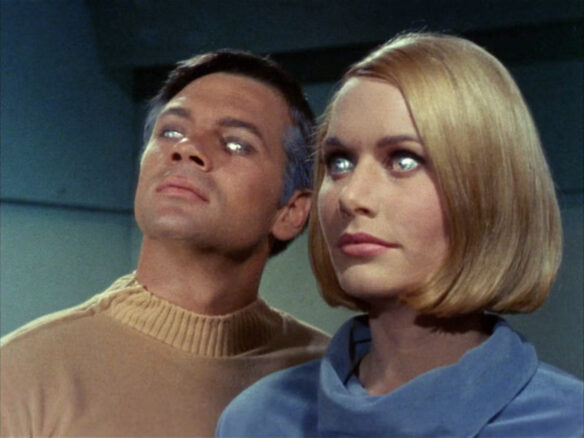
7) Where No Man Has Gone Before, Season 1, Episode 3, September 22, 1966, Written by Samuel A. Peebles, Directed by James Goldstone:
This, Star Trek’s second pilot, gave the suits at NBC what they wanted in the first place; action and adventure. Fortunately for us, it was also a well written episode that established Kirk and Spock characters for the series (McCoy was cast and introduced in the first filmed episode, “The Corbomite Maneuver”) and featured two outstanding guest star turns by Sally Kellerman and Gary Lockwood.

6) The Trouble With Tribbles, Season 2, Episode 15, December 29, 1967, written by David Gerrold, directed by Joseph Pevney: Who knew Star Trek could be FUNNY? I mean, there had been some semi-comic interludes between the series characters before this episode (and one notable comedy episode, “I, Mudd), but this one, written by future Hugo and Nebula winning author David Gerrold, has been rated as high as the second most popular episode of the original series in some polls, is a masterpiece of comic timing. The crew of the Enterprise is summoned via an emergency signal to Space Station K-7, to guard a shipment of experimental grain (quadrotriticale). Add an suspiciously intruding Klingon crew seeking shore leave and a con man peddling a pesky pet with prodigious capacity to reproduce and hi-jinks ensue.
For even more details about this classic episode, check out this 2017 article from Vanity Fair, which features Gene Roddenberry’s initial reaction to the production: “Star Trek: Inside ‘The Trouble with Tribbles,’ 50 Years Later” at Vanity Fair.
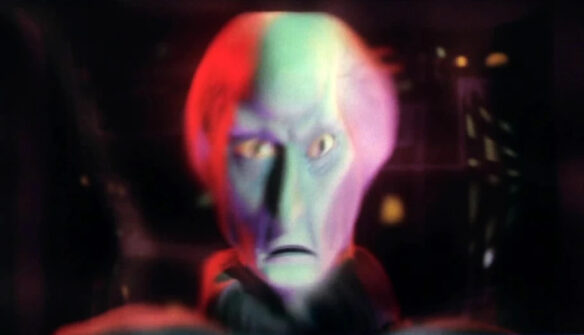
5) The Corbomite Maneuver, Season 1, Episode 10, November 10, 1966, Written by Jerry Sohl, Directed by Joseph Sargent:
So, when you’re ten years, like I was back in 1966, shows like The Outer Limits, Thriller and The Twilight Zone scared the hell out of me. So, after nine (mostly) character driven episodes, then came The Corbomite Maneuver, wherein the Enterprise is menaced by Commander Balok and its GIGANTIC spaceship. And when Spock finds a way to wrangle a video image of Balok, the shock of seeing this fearsome alien sent me, and a few younger siblings to make a beeline to dive behind the couch (just like our UK compatriots watching Doctor Who)!
And the ten-minute countdown at the end of act three, so the crew can “pray to their deities”, positively had me convinced there was no way they were getting out of this situation. But, Kirk, canny captain that he is, invoked the game of poker (which I had never heard of before, and eventually finagled his way to a peaceful resolution. But for one commercial break, I was utterly convinced they were goners. Well played, Captain Kirk, well played.

4) The Cage (Pilot) and The Menagerie Parts 1 & 2, Season 1, Episodes 11 & 12, November 17 and 24, 1966, Written by Gene Roddenberry, Directed by Robert Butler (pilot) and Marc Daniels (episode inserts): In the fall of 1974 and 1976, Gene Roddenberry made two stops in Cincinnati, Ohio; the first being a showing and question and answer period held on the campus of the University of Cincinnati (which I attended) and again two years later as a full fledge show at Riverfront Coliseum (the very same infamous site of the 1979 Who Concert stampede that killed eleven people).
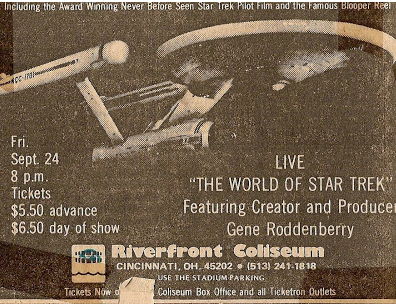
The event I attended on campus featured an unedited 16mm print of the first pilot, “The Cage”, filmed in 1964. By then, I was already familiar with the two-part episode that was combined with footage from the “new” show. The “blooper reel” was also quite hilarious.

And while “The Menagerie” is a compelling piece of sf drama (which won the 1967 Hugo Award for Best Dramatic Presentation) the original pilot was (and still is) one of the most mature and cerebral sf projects ever to be committed to celluloid. It was also notable for the first appearances two legendary television characters; Science Officer Spock, whose portrayal by Leonard Nimoy became a television legend in a few short years and First Officer “Number One” (who now officially has a formal name, Una Chin-Riley, and is well portrayed by Rebecca Romijn, thanks to a retcon by Star Trek: Discovery and Strange New Worlds), an (unfortunate) one-off role for future Mrs. Roddenberry, Majel Barrett. At a young age, it was good for me to see an alien like Spock and a woman commander on the bridge of the Enterprise, both being treated as respected and equal with their peers.

3) The City of the Edge of Forever, Season 1, Episode 28, 1967, written by Harlan Ellison (with revisions by Dorothy C. Fontana and Gene Roddenberry):
By the fall of 1974, I had seen every episode of Star Trek, in their original run and through syndication except one; “The City on the Edge of Forever”. At that point in time, I had just found out that one of the writers I recently discovered, a gent named Harlan Ellison, had written this one. So you can imagine my surprise when one evening, as I was returning to my dorm room, the tv in the deserted lounge was tuned to the independent station playing Star Trek and the episode was just starting. And I did not recognize the opening teaser, Captain Kirk intones that the Enterprise had detected waves of time distortion and had traced them to a desolate planet devoid of life forms. I immediately parked myself in the closest comfy chair and watched.
At the end of that hour, I was devastated. Doctor McCoy. The Guardian. 1930’s Chicago. Edith Keeler. And Captain Kirk’s final words, “Let’s get the hell out of here.” As they say, If you know, YOU KNOW. It won the 1968 Hugo Award and the 1967 Writers Guild of America award for Best Episodic Television Drama. What I didn’t know at the time was that the episode that aired was NOT the script that won the WGA award but a rewritten version of the original scripts.
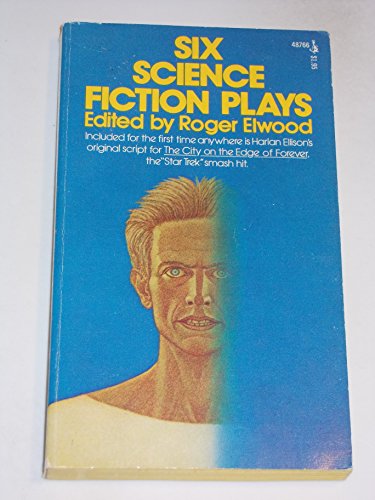
In 1975, Pocket Books published the original script in Six Science Fiction Plays (edited by Roger Elwood, a prolific anthologist of that era). It is, to me, a superior version of the story, with several surprising twists that are still shocking today.
There must be several books’ worth of verbiage that are entirely devoted to the bad blood that resulted in Ellison and Roddenberry’s disagreements over the production and what really happened. It is all fascinating and well worth looking up if you are inclined to do so.

2) A Taste of Armageddon, Season 1, Episode 23, February 23, 1967, written by Gene L. Coon and Robert Hamner, Directed by Joseph Pevney: In this episode, the crew of the Enterprise is on a (seemingly) routine mission to Eminiar VII to deliver a Federation Ambassador Robert Fox to set up diplomatic relations. What they all quickly learn is that Eminiar VII is at war with a neighboring planet, Vendikar and that all of the combat action is being done through mutual computer simulations exchanged between the planets, with the reported “casualties” reporting to disintegration chambers for execution. And since they came uninvited, that would include the ambassador and the crew of the Enterprise.
Of course, Captain Kirk, Spock, McCoy, Scotty and company are not going to stand for this foolishness and they force the government of Eminiar VII to stop the cycle of violence and deal with their problems diplomatically. But as routine as the episode is, it contains a very important scene that has stuck with me for decades. The allegory of turning war completely over to machine aside, a vital point was given in this exchange between Spock, Kirk and Anan 7 (David Opatoshu):
SPOCK: Computers, Captain. They fight their war with computers. Totally.
ANAN: Yes, of course.
KIRK: Computers don’t kill a half million people.
ANAN: Deaths have been registered. Of course they have twenty four hours to report.
KIRK: To report?
ANAN: To our disintegration machines. You must understand, Captain, we have been at war for five hundred years. Under ordinary conditions, no civilization could withstand that. But we have reached a solution.
SPOCK: Then the attack by Vendikar was theoretical.
ANAN: Oh, no, quite real. An attack is mathematically launched. I lost my wife in the last attack. Our civilization lives. The people die, but our culture goes on.
KIRK: You mean to tell me your people just walk into a disintegration machine when they’re told to?
ANAN: We have a high consciousness of duty, Captain.
SPOCK: There is a certain scientific logic about it.
ANAN: I’m glad you approve.
SPOCK: I do not approve. I understand.
And, as a young person, I learned that you can understand another person’s point of view and still totally disagree with that view, in a cool and, dare I say it, logical manner. We could all use a lot more of that sort of thinking in our 21st century world today. Just Saying…

1) Balance of Terror, Season 1, Episode 14, Written by Paul Schneider, Directed by Vincent McEveety: The Enterprise, on patrol on the edges of the Federation/Romulan “Neutral Zone”, receives a report from an outpost that is under attack by an unknown enemy. When they arrive, the outpost has been destroyed. Kirk suspects that the Romulan Empire, with whom the Federation fought a war against a century earlier, is testing the Federation’s defenses in view of a future attack. The ship’s sensors pick up a shadow of the attacking vessel, but not a visual one, suggesting that it may have a cloaking device. And when Spock is able to pick up an image from their internal cameras, the previously unseen Romulans are revealed to be humanoid, and suspiciously Vulcan in appearance.
This episode is also ranked as being among the best of the original series; it has a suspenseful battle of wills between Kirk and the unnamed Romulan captain (Mark Lenard’s first appearance on Star Trek), a subtle meditation on racism as Lt. Stiles (Paul Comi) openly questions the First Officer’s loyalty to Starfleet and a tragic love story that begins with a wedding and ends with Kirk comforting a newly widowed officer. But that’s not why I ranked this episode first among all others on this particular list. As with my previous pick, my youthful mind was struck by one small, particular moment during the final battle between the two ships, best stated here:
“When navigator Stiles (Paul Comi) heads to the phaser control room, Uhura assumes the forward-facing position at the navigation station next to Sulu at the helm. It’s one of the rare moments Uhura is up in front flying the ship. Symbolically, it’s awesome. Star Trek didn’t make a big deal about Uhura being a polymath, capable of various jobs on the Enterprise. It just happened.” — Ryan Britt, Inverse.com, August 1, 2022
And I remember all too well, back in 1966 there were an infinitesimally small number of people of color regularly featured on American television. So when I saw a black woman take the navigator’s seat on the bridge of a starship, Star Trek was telling me two things; that we, as people of color, had a place in the future and that even though that future might be fraught with perils and challenges, the human race had a future to look forward too, with other alien races and civilizations.
And that my friends is the legacy of Star Trek, from its creators, writers, directors, craftspersons and artists, in all of the formats that have been read, watched or seen.
A future, if we can dare to imagine and achieve it.
Discover more from File 770
Subscribe to get the latest posts sent to your email.

So many of your articles are meaningful to me. We’re of an age, and you put words to some of the experiences I had with SF. I recently binged Discovery. I haven’t found most of the post-TOS Treks compelling, but in catching up with Discovery, I remembered the kid I once was watching TOS, watching the exploration, Star Fleet, the optimisim, the values.
This article also reminds me of those early experiences, of how I used to look at possibility.
Thank you for the memories and the reminders.
Tangentially, when the cast started writing about their experiences, I wasn’t interested. I was definitly a fan boy, but was busy with other things, and didn’t see the need. Fortunately, a friend said I HAD to read Nichelle Nichols auto-bio. As much as I continue to be very fond of TOS, that a woman of such wonderful ability and skills was asked to do so little still deeply bothers me. That she went on to work with NASA is beyond wonderful.
I remember the first time I saw Star Trek one rainy weekend afternoon. Purely by chance, the next program up on TV was Star Trek, and for some reason my brother and I didn’t change the channel, allowing us (at 10 and 9, I’d guess) to see “The Naked Time” – and after that we were hooked.
Being Canadian, I would also point out that when Star Trek began airing, we were in our hundredth year of being a country, and our birthday celebration, Expo 67, was just months away from it’s 1967 run, where in six months, it recorded 52 million through the turnstiles.
Oh, and Shatner & Doohan were both Canadian, too.
I took me a while to dig this up, but since you shared your top 15 TOS episodes, Charles, I thought I’d share mine. These were compiled in 2017, from a full series rewatch. 8 of 15 overlap (although if I had gone to 20 I’m sure I would have included “The Devil in the Dark” and “Balance of Terror”:
15) The Doomsday Machine
14) All Our Yesterdays
13) Space Seed
12) The Enemy Within
11) Amok Time
10) Is There in Truth No Beauty?
9) What Are Little Girls Made Of?
8) The Menagerie, Parts I & II
7) The Trouble With Tribbles
6) A Private Little War
5) The Corbomite Maneuver
4) Charlie X
3) Journey to Babel
2) The Naked Time
1) The City on the Edge of Forever
That’s a wonderful article. It takes me back to the first season, when we all gathered at the house of the only person in our group who had a color television, so we could see it as it should be.